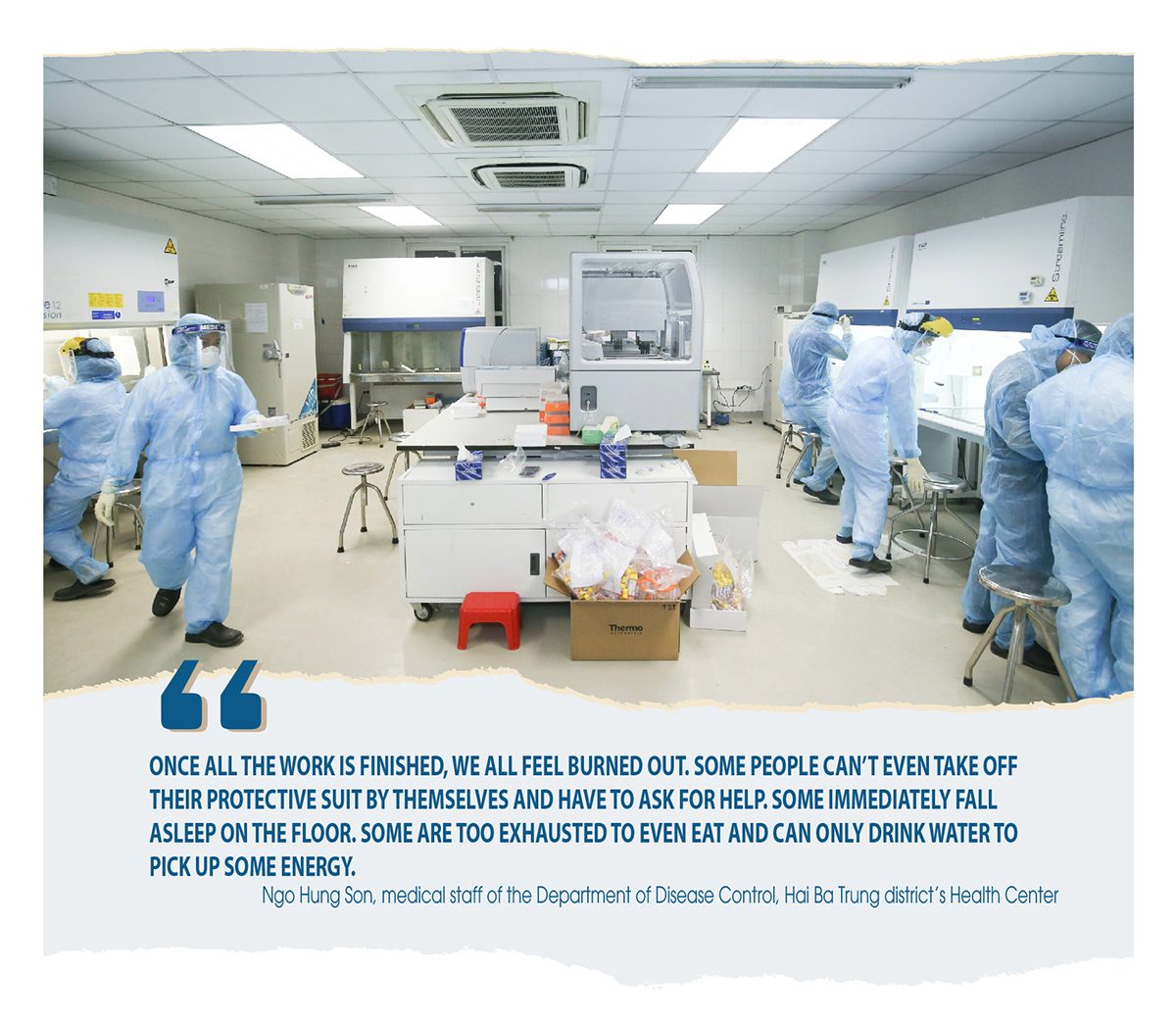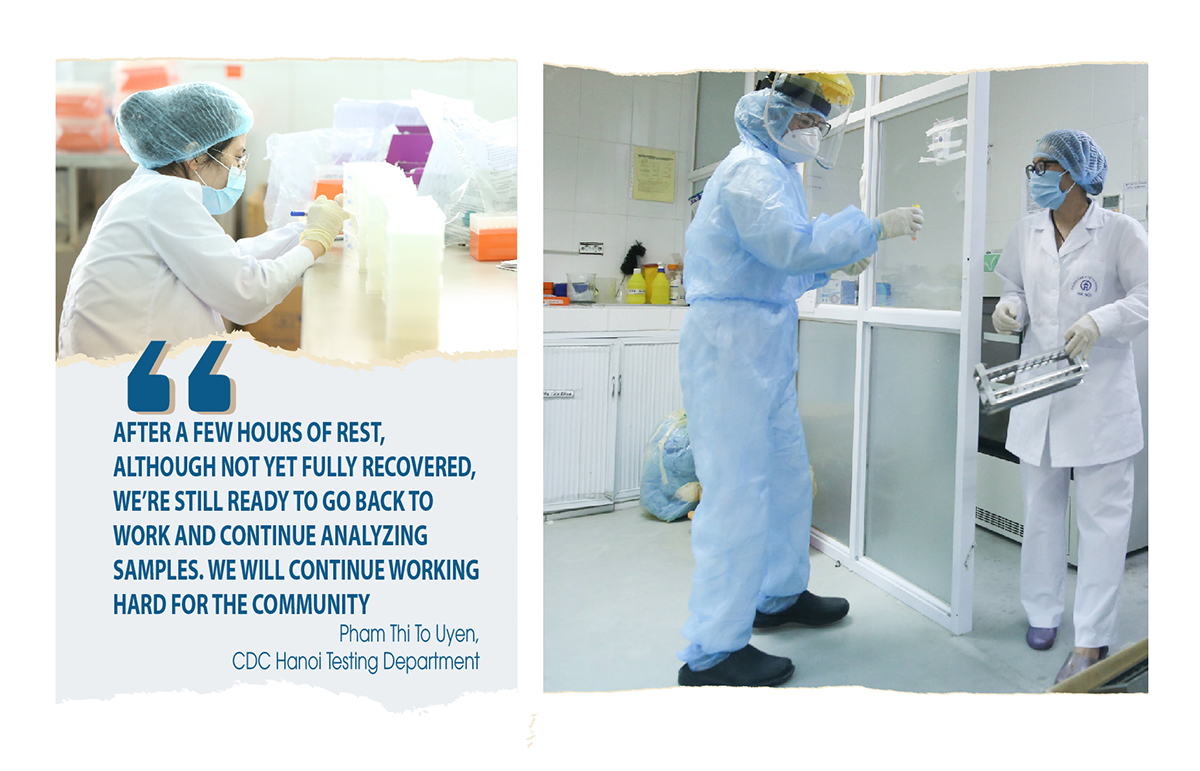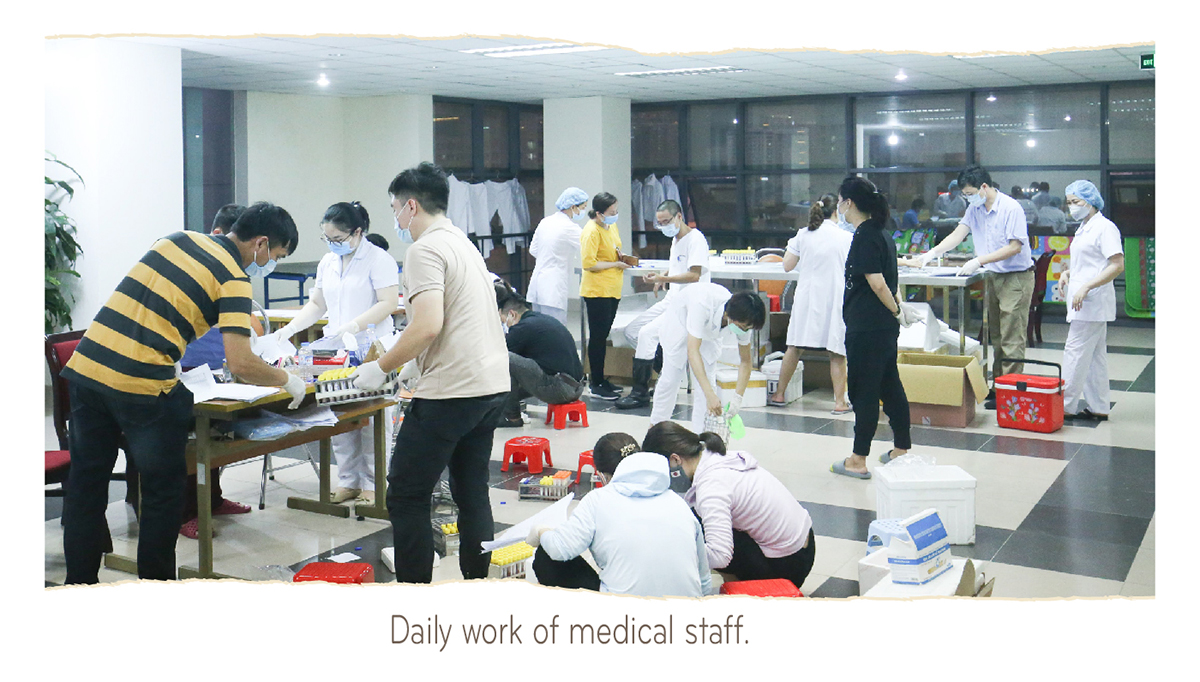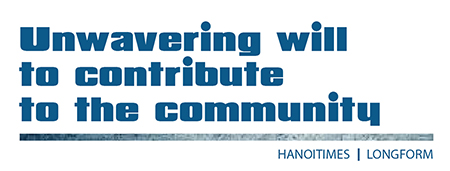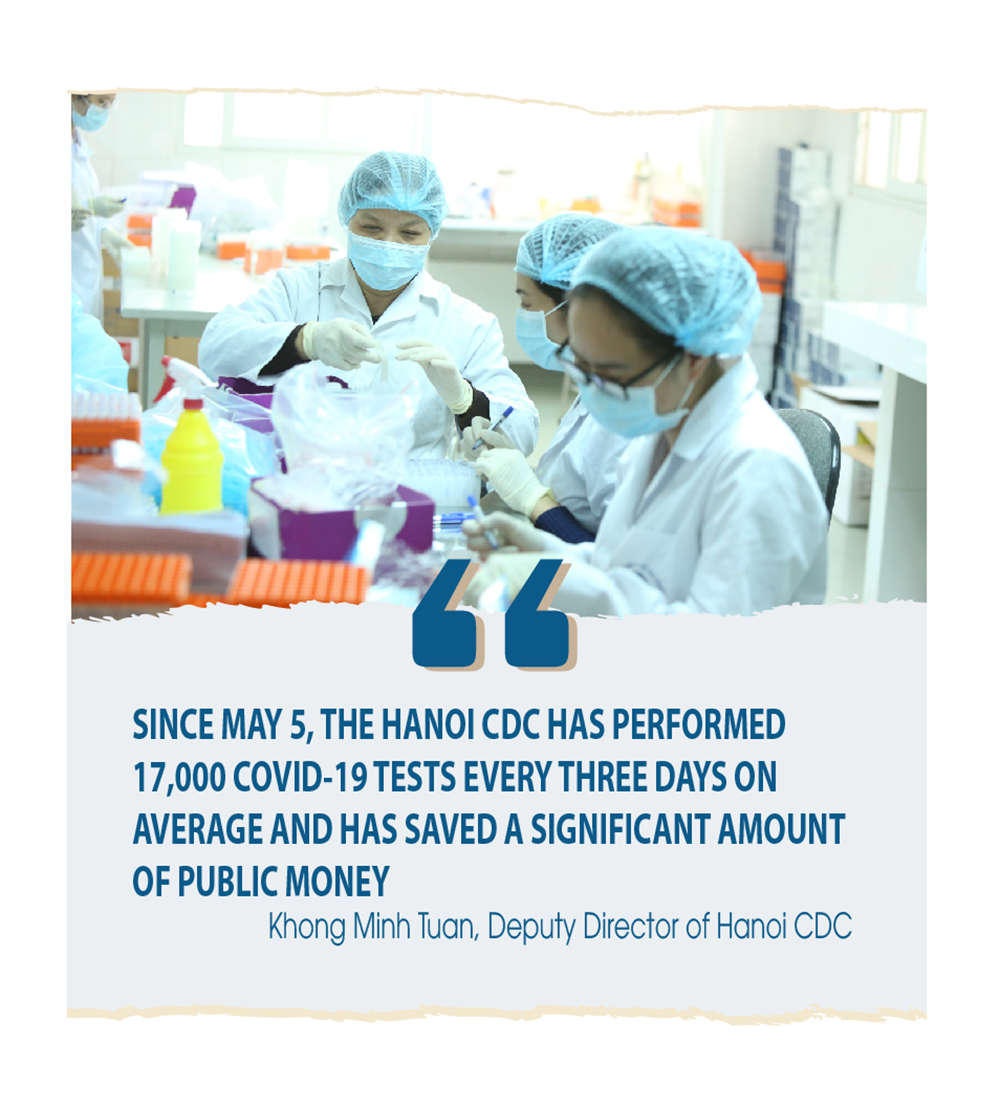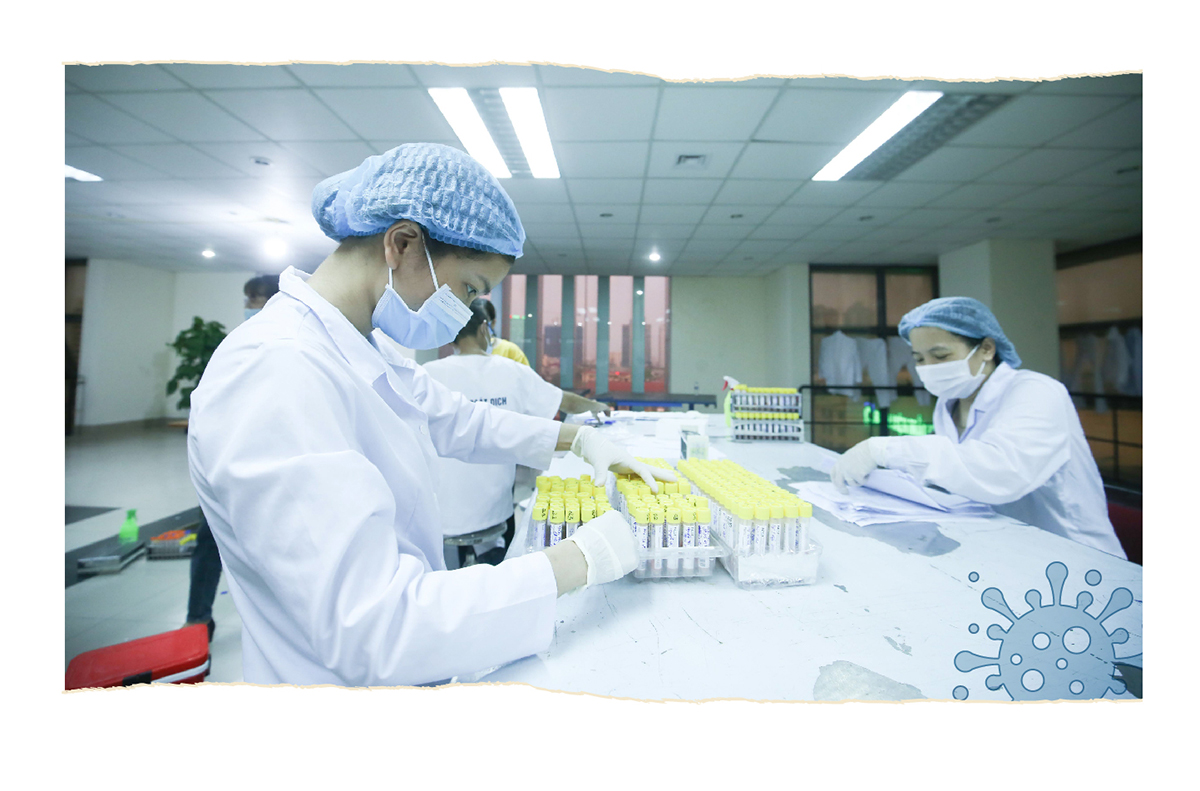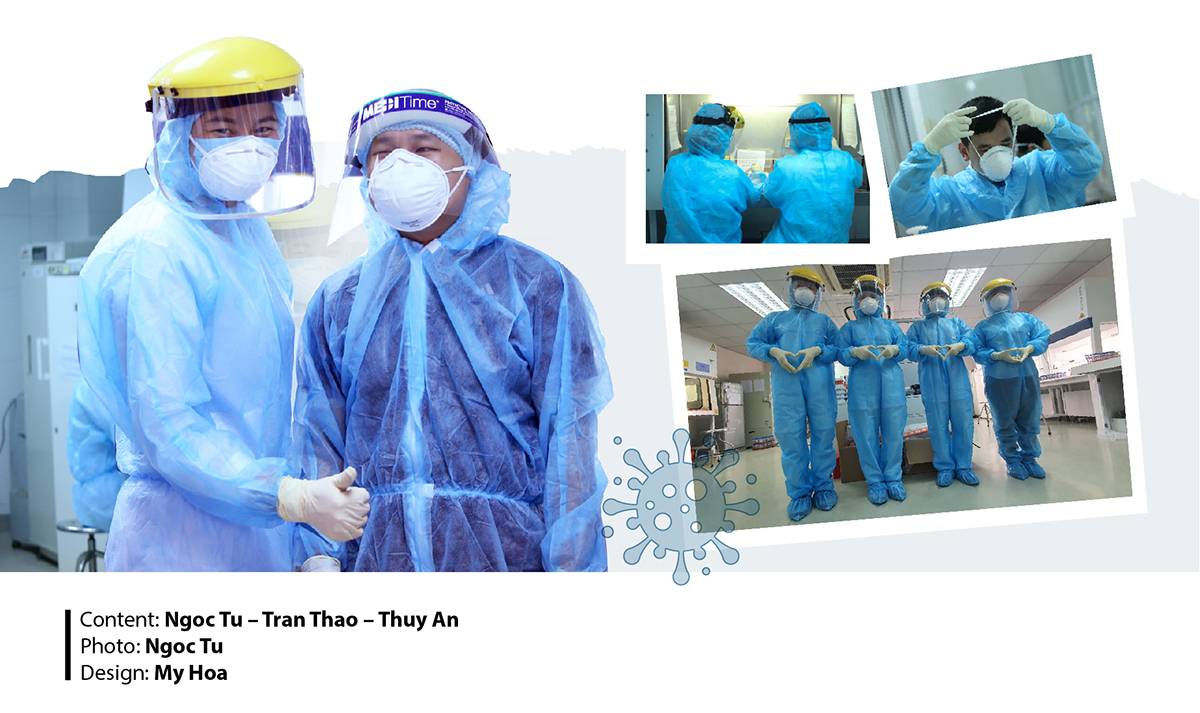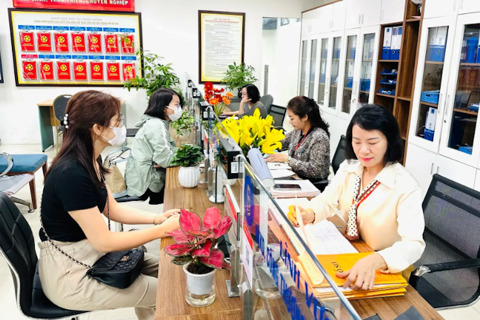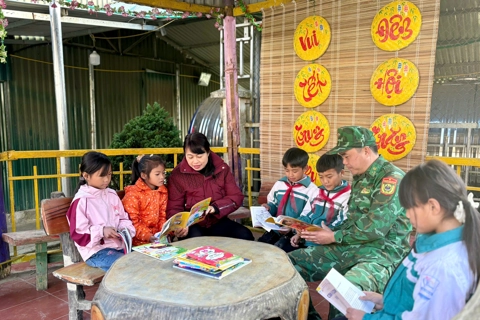Medical workers in a relentless battle against Covid-19
Medical personnel have been hailed as frontline Covid-19 warriors and put on a pedestal, but hardly anyone knows the physical ordeal and emotional burden they are coping with.
When the sun went down and the city lighted up, echoing in the hall on the eighth floor of the Center of Disease Control (CDC) building were the hurried footsteps of the medical staff from the Hai Ba Trung district’s Health Center. Wiping the dripping sweat from his forehead, Ngo Hung Son, a medical staff of the Department of Disease Control, Hai Ba Trung district’s Health Center, breathed out a deep sigh of relief. He and his colleagues had just finished collecting samples of around 400 returnees from Da Nang for Covid-19 testing. They had been working ceaselessly from 1.30 p.m. to 6 p.m. despite the scorching heat of 38 degrees.
“Sauna is an understatement to describe the suffocating feeling inside the bulky protective suit,” Son shared with The Hanoi Times, “Once all the work is finished, we all feel burned out. Some people can’t even take off their protective suits by themselves and have to ask for help. Some immediately fall asleep on the floor. Some are too exhausted to even eat and can only drink water to pick up some energy.”
The spike in temperatures is taking a toll on the health care workers, who have to don the stuffy protective clothing, safety goggles, hats, layers of masks, and inner gloves. Even when they are drenched in sweat, they cannot turn on the fan or air conditioner for fear of spreading infection. Many even become dehydrated from excessive sweating.
Now, as the new variants of the coronavirus are poised to unleash more serious waves of infections, Son and his colleagues have to work longer hours and cannot even return home.
“We start collecting samples at 6 a.m. and finish at around 4 p.m. However, we still have to send the samples to the Center for Disease Control (CDC) and this process is protracted. It is not until midnight that our work is completely done,” a staff at Thanh Oai district’s Health Center shared her story with The Hanoi Times.
When the clock strikes seven, many families gather around the dining table to have dinner. Yet, at that time, the medical staff at the Department of Testing, Imaging Diagnosis, and Functional Exploration of the Hanoi CDC are still preoccupied with receiving testing samples from districts. Containers of samples are delivered continuously, with some arriving at two or three the next morning.
Due to the overwhelming number of samples and the lack of personnel, the Hanoi CDC is currently prioritizing high-risk samples first, followed by pooled samples to quickly localize the infection sources and block the risk of pandemic spread in the community.
The task of testing samples not only requires urgency but also accuracy since any mistake may result in fatal complications. As a result, all the medical staff is obliged to follow detailed and stringent procedures. They know full well that a negative result can reduce the number of people in quarantine. But if the sample is positive, there will be another hardship awaiting ahead.
Every day, the Hanoi CDC conducts approximately 5,000 to 6,000 tests. On peak days, the amount spikes up to 10,000. But since each shift has only 10 medical staff members, there is little chance of them getting any rest. In fact, over 80 medical staff at the Department of Testing and 20 staff from other departments have to work a 24-hour shift. Only when all the machines are overheated do they have time to rest.
During long hours of working, they struggle to endure physical exhaustion and grapple with mental burnout. Fatigue and dark circles showed clearly on the face of Pham Thi To Uyen after working twelve hours unceasingly. She and her colleagues at the Testing Department are split in half to work 12-hours shifts per day. They are too busy to even eat their meals on time and have to always be ready to support each other.
“After a few hours of rest, although not yet fully recovered, we’re still ready to go back to work and continue analyzing samples. We will continue working hard for the community.” Uyen told The Hanoi Times.
With every single day passing by, the amount of pressure and work of Uyen and her colleagues have not dwindled. There are days when they come into close contact with over 10 positive Covid-19 cases. The nature of their work does not grant them the right to worry about being infected. So instead of being fearful, they tease each other “we’re F1!” to ease tension. They have to sacrifice their time with family as well as their own mental and physical health. But they are unwavering in their dedication to the community and to the belief that Vietnam will soon win the battle against Covid-19.
“My three little kids have to take care of themselves as I work from early morning until late night,” Uyen said.
Despite having three children at home, she feels compelled to stay at work and help with Covid-19 testing – although it means leaving her children on their own. Even worse, there is no one she can rely on. Her husband works far from home, while her parents-in-law are way over in Thai Nguyen, 90 km from Hanoi.
“I feel restless, not knowing what my kids eat or when they go to bed. But there’s nothing I can do, since the community needs me. And it’s my responsibility to contribute and support the community,” Uyen choked up when talking about her children.
Sharing about the silent work of the white blouse soldiers at the Hanoi CDC, Khong Minh Tuan, the Deputy Director, said Hanoi is racing against time to ramp up mass testing and contact tracing to prevent further outbreaks of Covid-19 in the community. The Hanoi CDC is attempting to conduct as many tests as possible with the most accurate results.
“It’s hard work for us, but it also guarantees the stability for the community and the success of the nationally coordinated strategy to cope with the pandemic. Currently, to further enhance the capacity of the testing system, we’re focusing on determining the factors that might undermine the testing system, thereby fostering its efficiency,” Tuan told The Hanoi Times.
There are two factors that are critical for the success of mass testing: subjective (human resources needed to collect samples) and objectives (consumables, reagents, and the likes). But those two factors are also barriers that can put the testing system under strain. For example, if the demand of sampling tubes needed per day is 1,000, Hanoi can surely meet. But there will be a critical shortage of supplies once the number escalates to 5,000 to 10,000.
Unfortunately, the paucity of supplies like sampling tubes can slow down the testing process and even place a burden on the health care system. This is because of the poor availability of suppliers in the market. Moreover, testing tubes and other medical and biological supplies do not have a long shelf life. So, when they become scarce, there will be a cascading effect that drives up the cost of supplies. The market price of a plastic test tube used to hover around VND25,000 (USD$1.09), but is now VND60,000 to 70,000 (USD$2.65 – 3.05). At this price, the current health financing mechanism cannot provide timely funding to purchase supplies and will require justification for approvals, which is a time-consuming process.
Without the needed equipment, there will not be samples for the testing laboratory to analyze. And without any results from the laboratory, the steering committee will not be able to formulate strategies to respond to the dynamics of the pandemic.
“Up until now, the Hanoi CDC has the capacity to respond to all the developments of the pandemic, even in situations of lacking supplies. However, if the demand for testing skyrockets beyond expectation, the ability of health systems to perform and respond appropriately to the evolving Covid-19 situation would be undermined. So, to meet the emergent demand and prevent the state budget from dipping into the red, the Hanoi CDC has been using its own financial resources to shoulder the costs of supplies. Since May 5, the Hanoi CDC has performed 17,000 Covid-19 tests every three days on average and has saved a significant amount of public money. In fact, for each sample tested, the state budget is only spending VND2,000 to 3,000 (US$0.087-0.13) per testing tube.” Tuan noted.
Right now, the task of the Hanoi CDC is to meet all the requirements of pandemic prevention and control. The staff there have also been striving to respond to the cascading needs of the community. Although they are constantly subjected to physical and mental stress by their long-term intensive work, they have persevered to prevent the pandemic from further placing lives and economies at risk.

